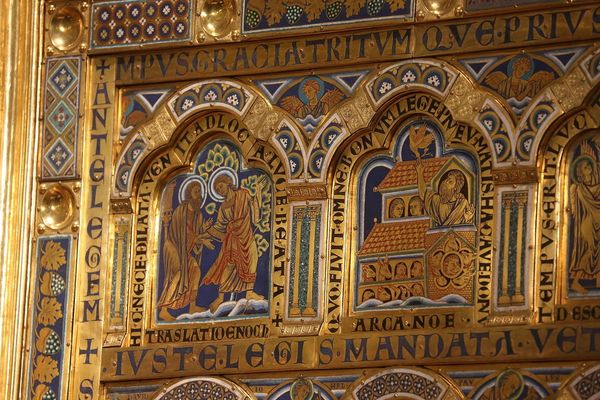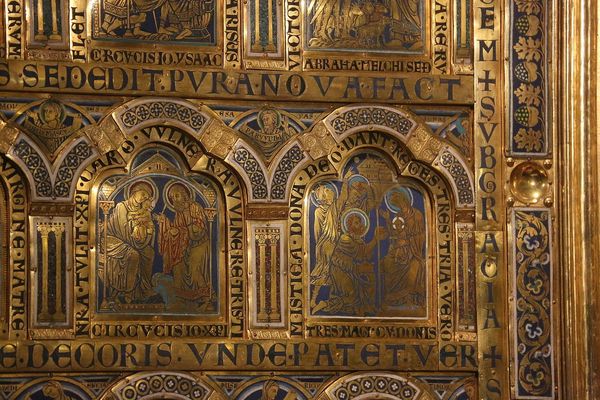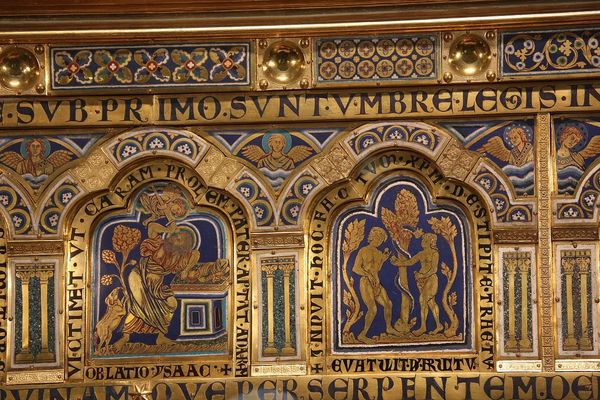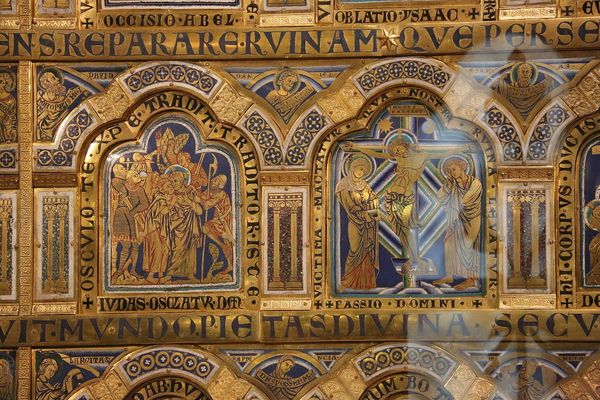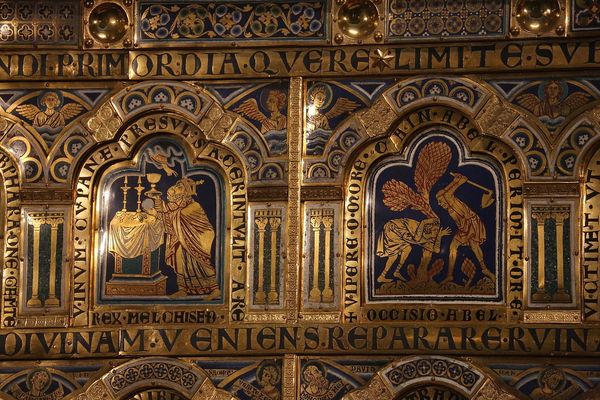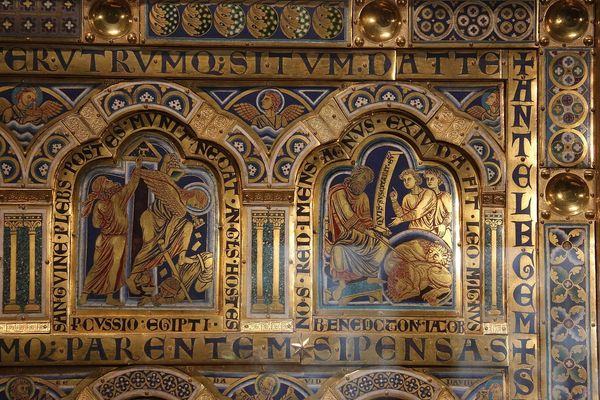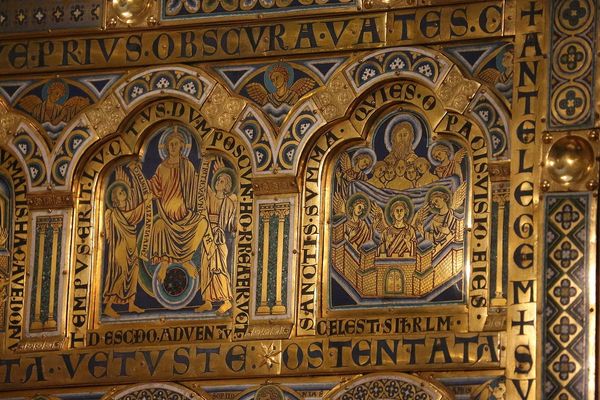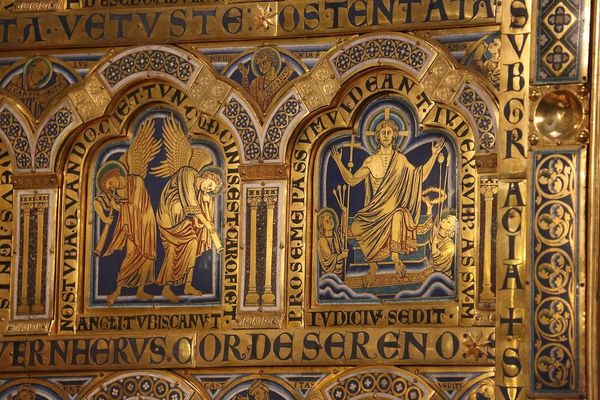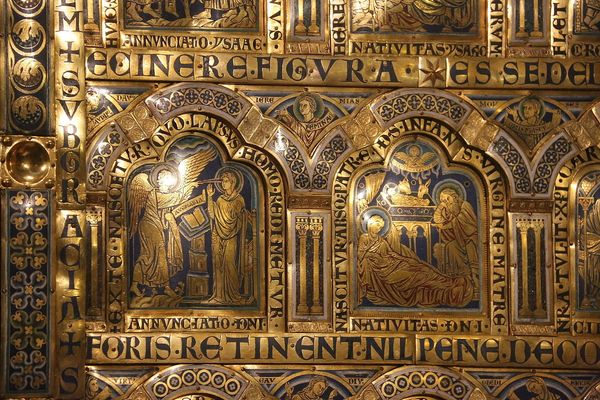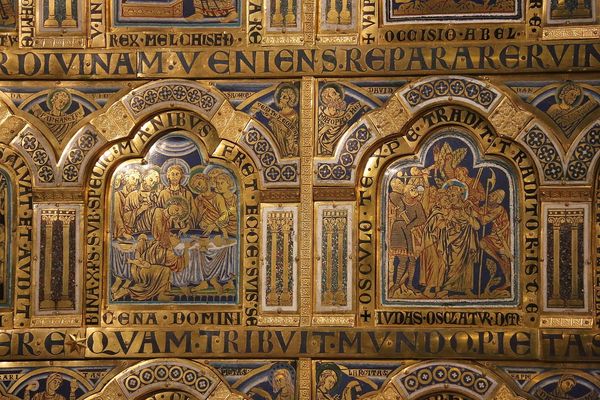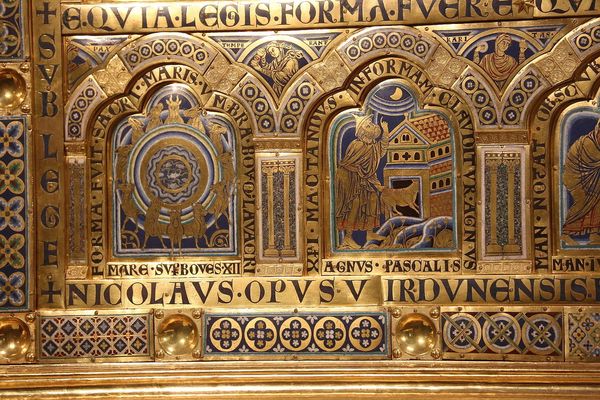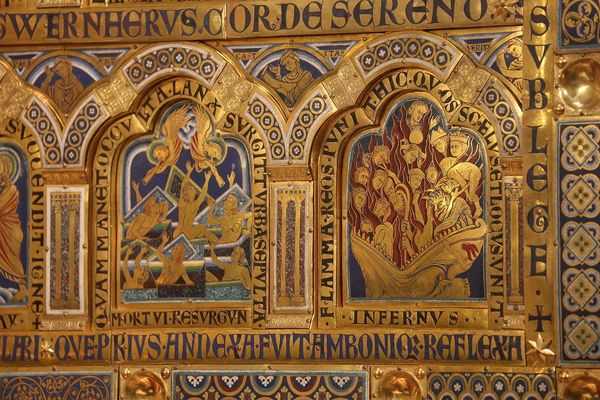
mosaic, carving, tempera, mural, architecture
#
mosaic
#
byzantine-art
#
medieval
#
carving
#
tempera
#
holy-places
#
figuration
#
cultural heritage
#
historic architecture
#
traditional architecture
#
romanesque
#
arch
#
mural
#
architecture
Copyright: Public domain
Crafted around 1181 by Nicholas of Verdun, this panel of the Klosterneuburg Altar teems with potent symbols, reflecting the medieval Christian worldview. Notice how the figures representing the Ascension of Christ cluster together, their upward gazes and gestures conveying spiritual yearning, typical of the era. These gestures echo in various forms throughout history, from classical depictions of orators to Renaissance paintings of saints in divine ecstasy. Consider the raised arms of ancient Roman figures, adapted over time to express devotion in Christian iconography. This visual language taps into our collective memory, evoking a sense of awe and reverence. Such imagery isn't merely representational; it's emotionally charged. The upward movement, the expressions of awe, these elements work together to create a powerful sense of spiritual elevation, engaging viewers on a deep, subconscious level. The cyclical progression of these symbols showcases how gestures evolve and resurface, imbued with renewed significance across the ages.
Comments
No comments
Be the first to comment and join the conversation on the ultimate creative platform.
